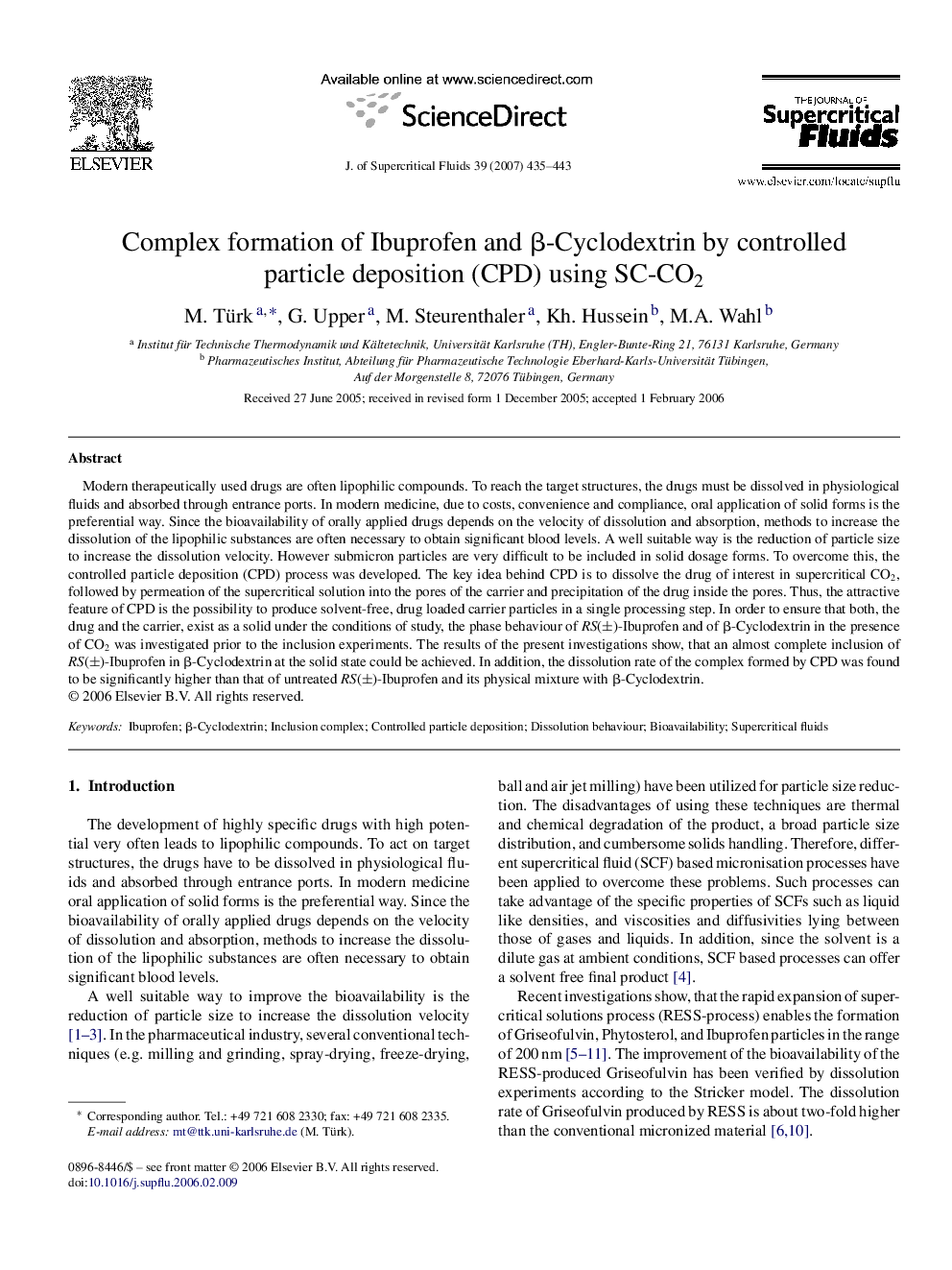| Article ID | Journal | Published Year | Pages | File Type |
|---|---|---|---|---|
| 232143 | The Journal of Supercritical Fluids | 2007 | 9 Pages |
Modern therapeutically used drugs are often lipophilic compounds. To reach the target structures, the drugs must be dissolved in physiological fluids and absorbed through entrance ports. In modern medicine, due to costs, convenience and compliance, oral application of solid forms is the preferential way. Since the bioavailability of orally applied drugs depends on the velocity of dissolution and absorption, methods to increase the dissolution of the lipophilic substances are often necessary to obtain significant blood levels. A well suitable way is the reduction of particle size to increase the dissolution velocity. However submicron particles are very difficult to be included in solid dosage forms. To overcome this, the controlled particle deposition (CPD) process was developed. The key idea behind CPD is to dissolve the drug of interest in supercritical CO2, followed by permeation of the supercritical solution into the pores of the carrier and precipitation of the drug inside the pores. Thus, the attractive feature of CPD is the possibility to produce solvent-free, drug loaded carrier particles in a single processing step. In order to ensure that both, the drug and the carrier, exist as a solid under the conditions of study, the phase behaviour of RS(±)-Ibuprofen and of β-Cyclodextrin in the presence of CO2 was investigated prior to the inclusion experiments. The results of the present investigations show, that an almost complete inclusion of RS(±)-Ibuprofen in β-Cyclodextrin at the solid state could be achieved. In addition, the dissolution rate of the complex formed by CPD was found to be significantly higher than that of untreated RS(±)-Ibuprofen and its physical mixture with β-Cyclodextrin.
